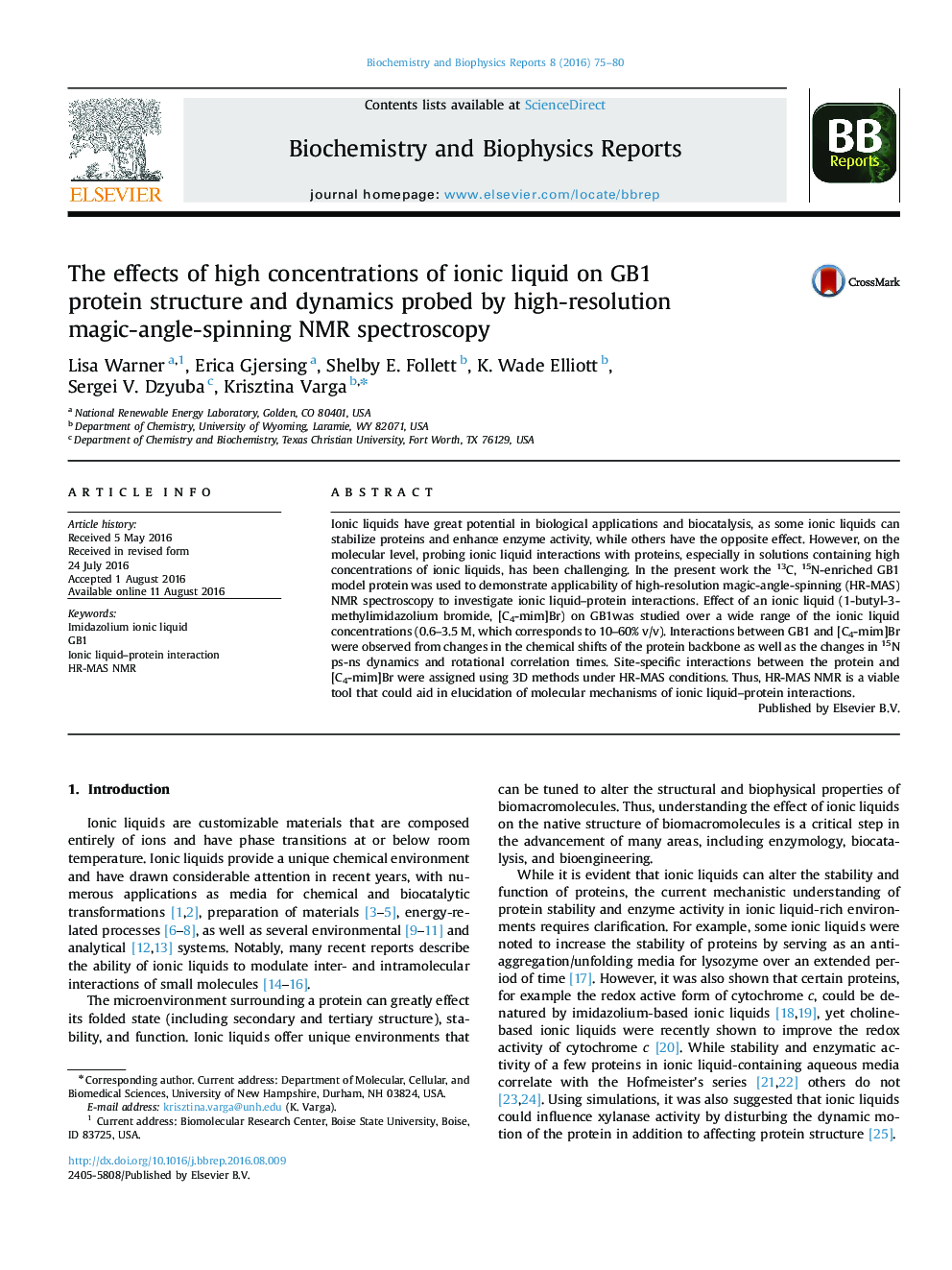| Article ID | Journal | Published Year | Pages | File Type |
|---|---|---|---|---|
| 1941583 | Biochemistry and Biophysics Reports | 2016 | 6 Pages |
•Probing IL interactions with proteins using conventional techniques is challenging.•Here, HR-MAS NMR was used to investigate IL–protein interactions.•Model protein GB1 was investigated in high concentrations of [C4-mim]Br.•This technique facilitates atomic level characterization of protein-IL interactions.
Ionic liquids have great potential in biological applications and biocatalysis, as some ionic liquids can stabilize proteins and enhance enzyme activity, while others have the opposite effect. However, on the molecular level, probing ionic liquid interactions with proteins, especially in solutions containing high concentrations of ionic liquids, has been challenging. In the present work the 13C, 15N-enriched GB1 model protein was used to demonstrate applicability of high-resolution magic-angle-spinning (HR-MAS) NMR spectroscopy to investigate ionic liquid–protein interactions. Effect of an ionic liquid (1-butyl-3-methylimidazolium bromide, [C4-mim]Br) on GB1was studied over a wide range of the ionic liquid concentrations (0.6–3.5 M, which corresponds to 10–60% v/v). Interactions between GB1 and [C4-mim]Br were observed from changes in the chemical shifts of the protein backbone as well as the changes in 15N ps-ns dynamics and rotational correlation times. Site-specific interactions between the protein and [C4-mim]Br were assigned using 3D methods under HR-MAS conditions. Thus, HR-MAS NMR is a viable tool that could aid in elucidation of molecular mechanisms of ionic liquid–protein interactions.
Graphical abstractFigure optionsDownload full-size imageDownload as PowerPoint slide
